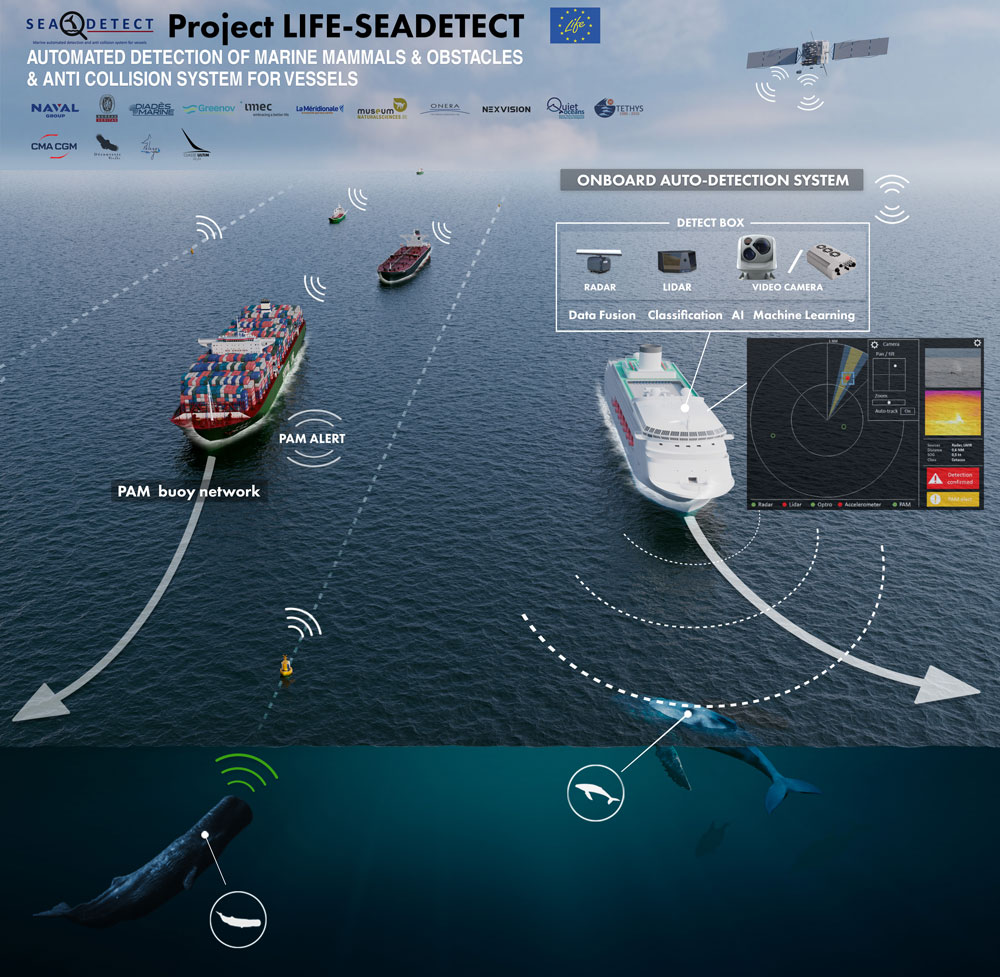SeaDetect
By supporting LIFE-SeaDetect’s AI-powered detection systems, Bureau Veritas helps safeguard the wellbeing of marine mammals.
|
LIFE-SeaDetect is part of the LIFE Program, an EU-funded environmental initiative. It aims to harness technology to prevent collisions between ships and whales, dolphins or porpoises. |
Biodiversity loss mitigation
Shipstrikes are the leading cause of cetacean fatalities, but LIFE-SeaDetect is projected to save up to 100 marine mammals per year.
Around a quarter of those mitigated fatalities could benefit the Pelagos Sanctuary, an 84,000 km2 area in the Ligurian basin. The sanctuary is a key feeding ground for Mediterranean Fin Whales, and many other whales and dolphins frequent the area. This puts them in direct risk as Pelagos is one of the world’s busiest shipping lanes.
As well as safeguarding against biodiversity loss, the technology can also be used to prevent collisions with containers and other floating objects.
Empowering AI-based detection
SeaDetect takes an innovative two-pronged approach to detection and anti-collision systems:
- An onboard system of multi-function sensors integrated with artificial intelligence to detect potential collisions with cetaceans and similarly large, floating objects
- A network of Passive Acoustic Monitoring (PAM) buoys to detect and triangulate the position of cetaceans. The PAM network will feed into REPCET marine location tracking software to inform all equipped vessels of the collision risk
These systems can detect cetaceans within a radius of 1 km in most weather conditions, in real-time and 24 hours a day. Testing shows that this range is sufficient for even the fastest vessels in heavy traffic to change trajectory.
Bureau Veritas’ role
As a LIFE-SeaDetect partner, Bureau Veritas has mobilized its measurements and Rule development departments to assist in the project. We have undertaken three main actions:
- Devising a quality control protocol to facilitate certification schemes that standardize equipment preparation and deployment, performance, post-processing and interpretation of monitoring results
- Building and facilitating the SeaDetect Stakeholders Group (SSG), uniting a broad spectrum of international stakeholders with knowledge of the expectations and challenges of SeaDetect’s EU and potential global roll-out
- Defining a framework, with guidance note(s) – integrating our SMART __ notation – to cover installation, minimal performance, system checks and maintenance
Our partners in the SeaDetect project are Naval group, Sirehna, Diadès Marine, Greenov, Imec – IPI, Nexvision, Onera, Quiet-Oceans, the Royal Belgiun Institute of Natural Sciences, Tethys and La Méridionale.











